Aviation Trail – Reminders and remnants of de Havillands in Hatfield
Sir Geoffrey de Havilland founded The de Havilland Aircraft Company Limited on 25 September 1920, ten days before the company took up residence at Stag Lane, Edgware. By the time they bought the land and opened an aerodrome in Hatfield, in 1930, de Havilland was a successful global company. But it was taken over by Hawker Siddeley in 1960, who absorbed the company and dropped the de Havilland name in 1963. In 1977 Hawker Siddeley become part of British Aerospace, but many people in Hatfield today still refer to the airfield site as de Havillands. Aviation may have flown away but the de Havilland name lives on, and there are other reminders of Hatfield's aviation glory days.
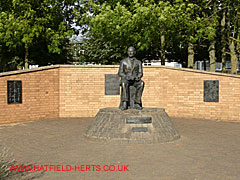
Sir Geoffrey de Havilland statue – sculpted by Keith Maddison, who also created the two flanking plaques bearing de Havilland aircraft. The statue, which was unveiled by the Duke of Edinburgh in July 1997, is located on the University of Hertfordshire's College Lane Campus. The University itself is a reminder of de Havillands, as it origins can be traced back to their technical school.
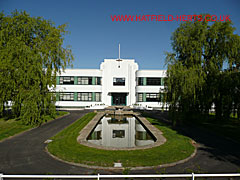
The de Havilland Aircraft Company headquarters building – designed by the firm of James M Monro & Son of Glasgow, it originally opened in 1934. Now part of a Police and Court complex. Sadly, nothing remains of the clubhouse, beacon, swimming pool and sports courts that were the first structures on the site. They were demolished as the factory expanded.
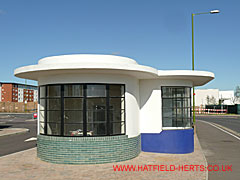
Entrance Guardhouse – another surviving part of the 1934 headquarters complex. It has been restored but currently is not used.
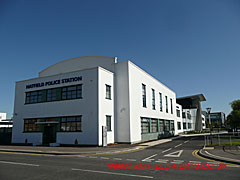
Canteen Block – also dating back to 1934, now the Hatfield Police Station, which has been joined to the old HQ building to form part of a Police and Courts complex. During WWII, artist Frank Wootton painted a mural on the wall of the workers canteen (managers had separate facilities upstairs). Sadly, this has not survived although a picture of it was published in The Times.
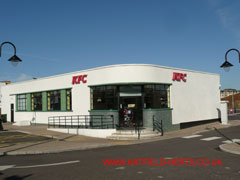
Personnel Block – the last of the four 1934 survivors. Now used as a fastfood outlet.
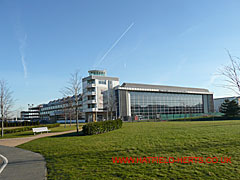
Comet (Flight Test) Hangar and Control Tower – now used as a leisure centre and gym, the world's first commercial jet airliner was built here. Designed in the 1950s by James M Monro & Son, the architecture firm that designed the original factory buildings in the 1930s (this is possibly one of their last commissions as the firm closed in 1955). A fitting tribute and testament to what was achieved here can be seen in the comet-like contrail of a passenger jet in the sky above.

The Fielder Centre – now used by the University of Hertfordshire as a conference facility. Originally built on the Dynamics site as a place to host sales negotiations.
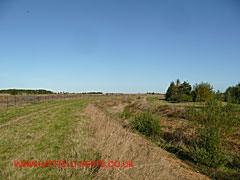
Ellenbrook Park and beyond – Beyond the western borders of the nature park is a wide open expanse of the former airfield. Now called Ellenbrook Fields.
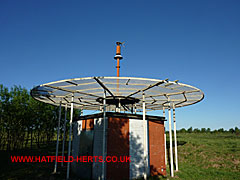
Airfield Radio Beacon / Aerial Lighthouse – following the opening of Ellenbrook Fields, now visible from close quarters (but not too close please, as it is now a barn owl roost). Not to be confused with the original airfield beacon, which literally was an aerial lighthouse (due to be installed again at Hatfield).
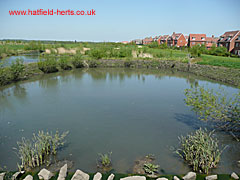
Ellenbrook Park and Salisbury Village – part of the old airfield has been used for gravel extraction, and the pits converted into a nature park. Part of Salisbury Village – a new housing development on its eastern border – can be seen in this view.
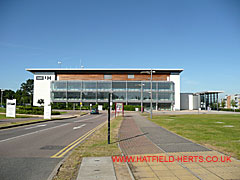
University of Hertfordshire's de Havilland Campus – built on a section of the former airfield, and opened by the Duke of Edinburgh on 3 November 2003. Photo shows the main entrance and the Learning Resources Centre, with the entrance to The Street on the right

The de Havilland Aircraft Company logo – on the wall of the two-storey de Havilland Sports and Social Club building, which is also the training HQ for Saracens Rugby Club. The clubhouse was opened by the then UH Chancellor Lord MacLaurin on 26 March 2002. The 2003 painting 'A de Havilland heritage' by Edmund Miller, GAvA member and former de Havilland employee, adorns the entrance foyer.
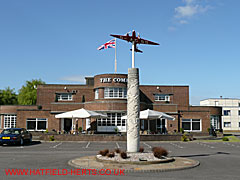
The Comet Hotel and Comet Racer model – opened in 1936, and a tribute to the DH.88 Comet Racer G-ACSS that won the 1934 MacRobertson England-Australia Air Race. The hotel was designed along the lines of an aeroplane with the 'cockpit' bar and 'wings'. Alex Henshaw celebrated winning the 1938 King's Cup Air Race here.
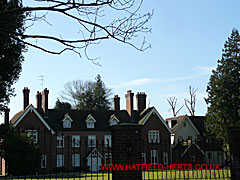
Astwick Manor – historic building that was once home to the de Havilland Technical School. Converted into luxury apartments in 2004.
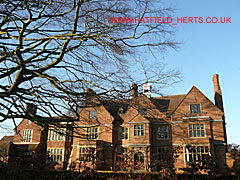
Great Nast Hyde House – dates back to around the late 16th Century. Another historic building used by the de Havilland Aircraft Company, now a private residence.
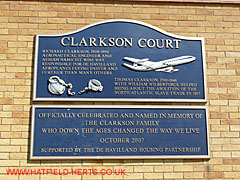
Clarkson Court Memorial Plaque – Clarkson Court is one of the new residential block of flats built on the airfield site. The memorial commemorates Richard Clarkson (1904-1996), aeronautical engineer and aerodynamicist at de Havillands; and his relative Thomas Clarkson (1760-1846), who with William Wilberforce helped end slavery.
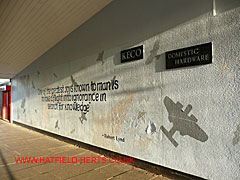
de Havilland Mural – part of the wall mural at the Hilltop shopping precinct in South Hatfield. Created by Sarah Dilley a University of Hertfordshire art student. Her great grandfather had worked at the de Havilland factory during WWII.

Wind Turbine – supplies electricity to the ultra-environmentally-friendly Howe Dell School built on the airfield site. The buildings in the background are warehouses and business premises built on the Manor Road site. No trace remains of the wind tunnels that were used to test, among other things, wind turbine blades.
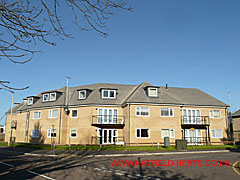
de Havilland Close – one of the few roads in Hatfield outside of the airfield that bear the de Havilland name (seen here at the junction with St Albans Road East). However, many of the roads on the airfield bear the names of de Havilland aircraft or people connected with the company (please see Roads to Remember).
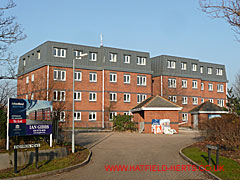
de Havilland Apartments – Endymion Mews, off School Lane. Apart from using the name no historic connection to de Havillands.
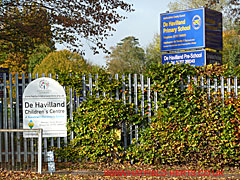
de Havilland Children's Centre, de Havilland Primary School and de Havilland Pre-School – Travellers Lane entrance. Named in honour of Sir Geoffrey and the company that played a huge role in Hatfield's 20th Century history.
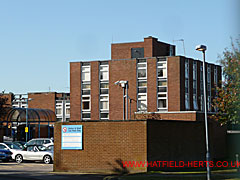
Butler Hall – Student Hall (seen from Bishops Rise). Named in honour of Alan Samuel Butler, de Havilland Chairman (1924-1950), who donated the land that became the University of Hertfordshire's College Lane Campus.
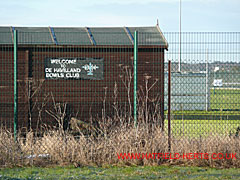
de Havilland Bowls Club – founded in 1937, located off Albatross Way and bordering the road to St Albans.
Hatfield Aerodrome Heritage Trail
Officially opened on 24 November 2010.
Back to: Aviation and Aerospace